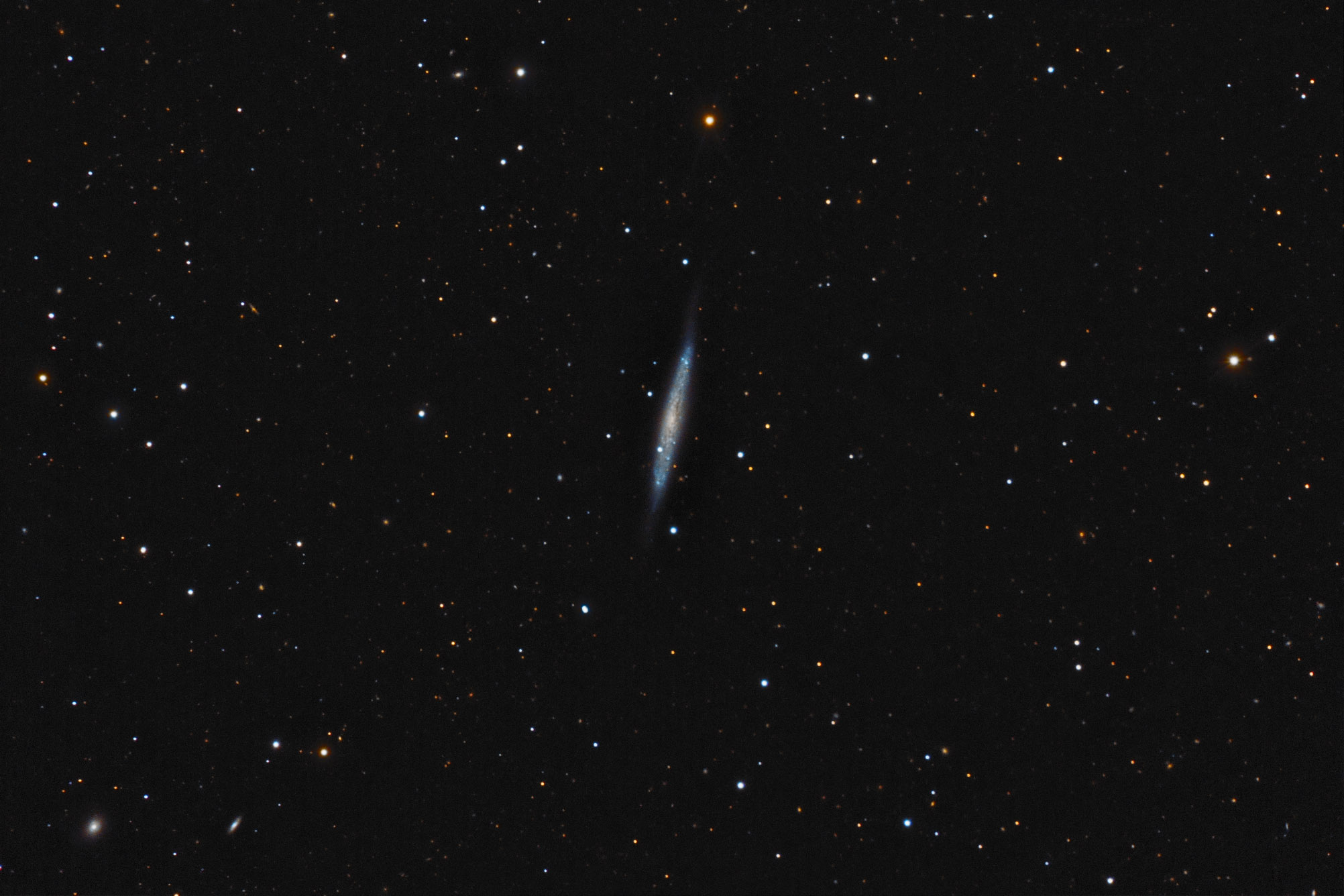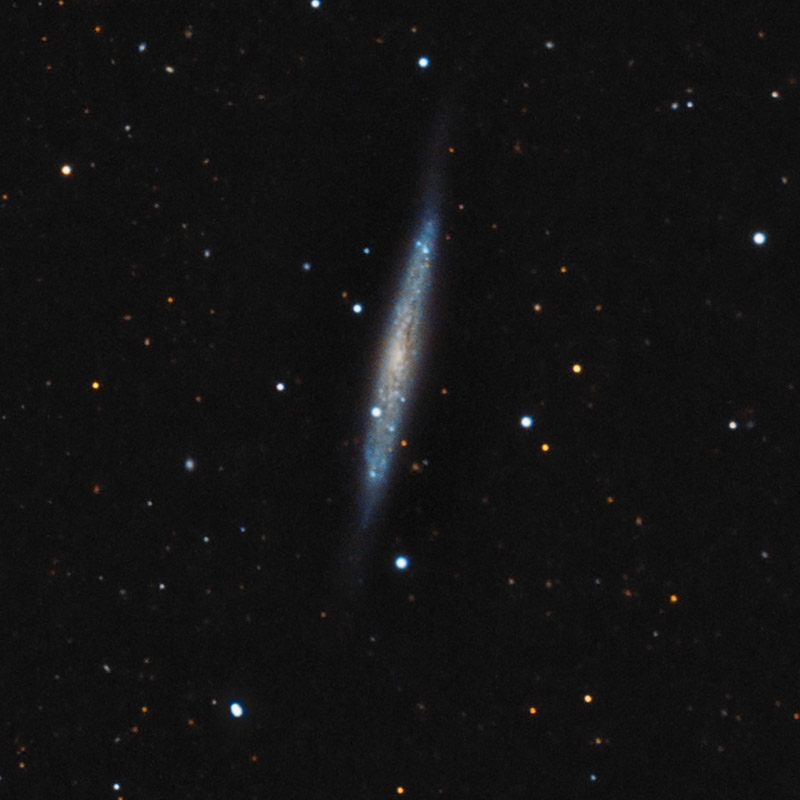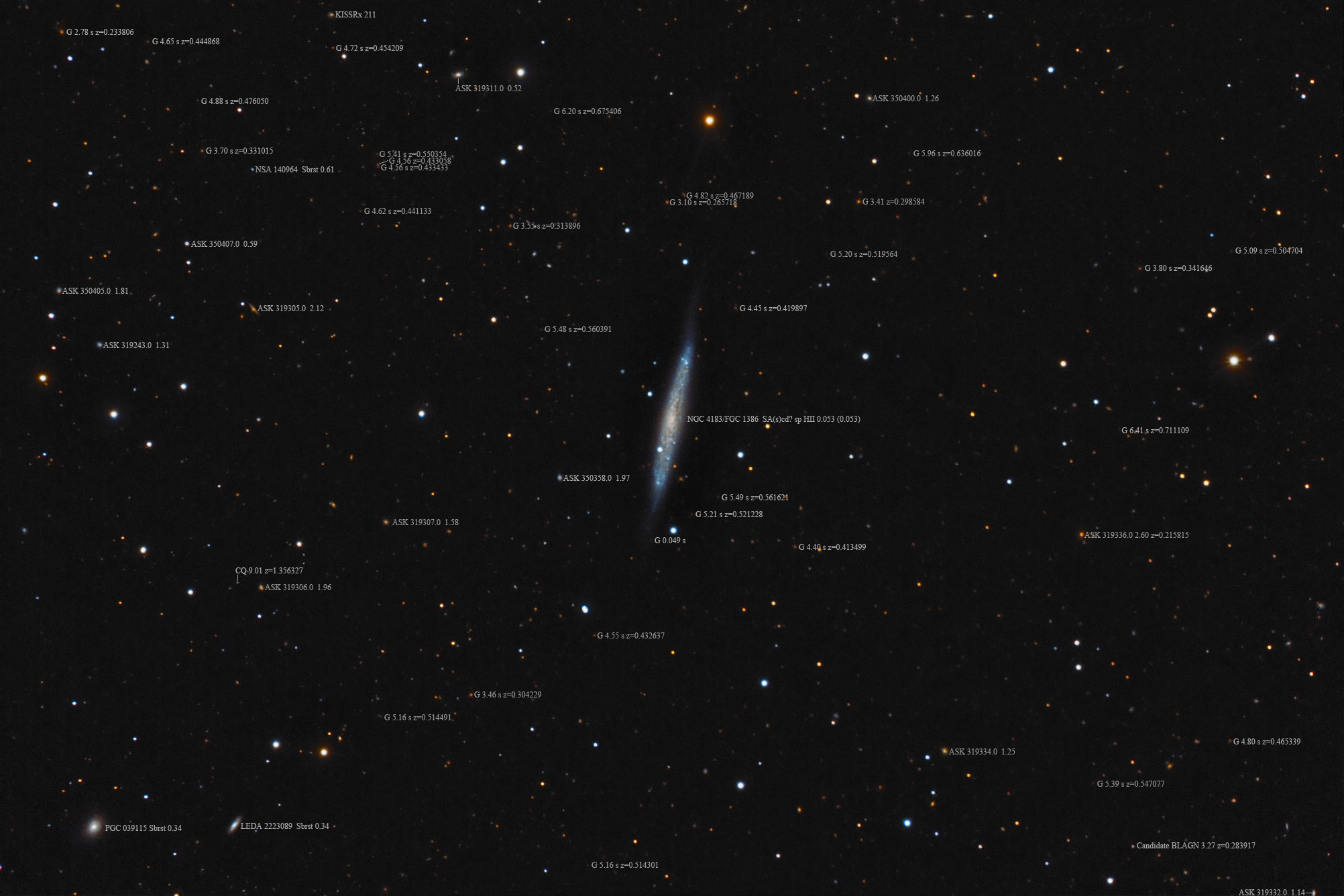| Description | Images |
Object name: NGC4183Designation(s): NGC4183, NGC 4183/FGC 1368 is a near edge on flat galaxy in western Canes Venatici 3.75 degrees south of the far more well-known M106. It is classified as SA(s)cd?. Except for a faint dust lane, I see little spiral structure. I suspect seen face on it may be a very flocculent galaxy being made up of many short arm segments rather than full arms. The two blue objects at the top are large star clusters. This one went on my to-do list as an interesting flat galaxy. While it was discovered by William Herschel on April 14, 1789 it isn't in either of the two H400 observing programs which surprised me. It is about 53 million light-years distant by both redshift and non-redshift measurements. That agreement is unusual. If you look closely you will see it has faint extensions off either end. They are longer on the northern side. I suspect these are faint arms rather than plumes. The nearly doubles its size. Measuring the obvious bright portion it is about 55 million light-years across but when the faint extensions are included it nearly doubles to over 106,000 light-years in size. Likely a longer exposure than my standard 40 minutes would show it as even larger. Related Designation(s):2MASS J12131678+4341547, 2MASX J12131686+4341537, 2MASXi J1213168+434153, 2MFGC 09620, CGCG 1210.7+4358, CGCG 215-053, EON J183.320+43.699, FGC 1386, GALEXASC J121316.83+434153.2 , GALEXMSC J121316.71+434156.8 , HDCE 0706 NED047, HIJASS J1213+43, LDCE 0867 NED087, LGG 269:[G93] 009, MCG +07-25-051, NGC 4183, NGC4183, NSA 060664, NVSS J121316+434203, PGC 038988, RFGC 2222, SDSS J121316.87+434154.9, SDSS J121316.88+434153.3, SDSS J121316.88+434154.9, UGC 07222, UMa Cluster:[PRL2014] U147, USGC U480 NED32, UZC J121317.0+434153, [M98j] 170 NED46, |


